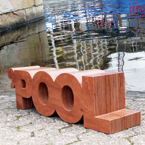 I have been spending time in the presence of cyber-dystopians.
I have been spending time in the presence of cyber-dystopians.
Last Tuesday I went to great talk by Evgeny Mozorov at the RSA, to hear Mozorov pour scorn on the idea that the internet is the harbinger of a new democratic personal freedom. He suggests that totalitarians and corporate astroturfers alike love it when we unthinkingly accept the internet as a force for good; it makes their work so much easier for them. Institutions are weakened by social media? Bah! It strengthens their hegemony.
I went to Art of Digital, hosted by FACT in Liverpool, where a great line up includedAndrew Keen rehearsing the thesis he put forward in Cult of the Amateur, namely that the internet is destroying the underpinnings of our culture by making conventional cultural transmission valueless, destroying newspapers and publishers and replacing erudition with Wikipedia. (Actually he’s moved on a little since then – but I’ll come to that in a minute.)
It’s true we have lived in the age of technological positivism for a little too long. When I freelanced for Wired it seemed almost heretical to suggest that some of the things we were writing about might not actually ever happen. A little corrective to that relentless utopianism is no bad thing. However the new public speaking circuit – something which has blossomed unexpectedly in the virtual age – naturally magnifies the extremes of the argument. You’re more likely to be listened to if you say something is either brilliant or crap.
While it’s true that the internet is altering culture fundamentally, maybe it’s time we started being a little more systematic about finding out exactly what it is that’s really going on.Matthew Taylor said this in his blog yesterday; any change produces results that are likely to be both positive and negative; we need to start understanding what they are. So what does this mean for the arts?
The Art of Digital strand has, naturally, been looking into that. I’ve argued elsewhere that arts institutions don’t fully understand the unfolding changes that are taking place – and the various consultants speaking earlier in the day, who didn’t go much further than describe social media as much more than a particularly whizzy new marketing tool, weren’t doing a great deal to change that outlook.
It was, paradoxically, Andrew Keen who pointed out one silver lining for the arts – and one that is going to be undoubtedly very powerful in years to come. We live in a world in which almost anything can now be copied for free. As the financial value of anything that can be copied disappears, so too the cultural value becomes undermined. For instance, recorded music, one of the greatest forms of the 20th century, is in a major slump from which it will never recover. Sure, there is great music still being made, but it’s a lot harder to get paid for it, and as a consequence, its cultural heft is drifting away. We are unlikely to see a cultural force as strong as, say, The Beatles – whose greatest music was never performed live – ever again.
But – sticking with music – we’re living in a golden age for performing artists. Never have as many people flocked to live concerts. The recession hasn’t even begun to put a kink in box office receipts.
As the value of the reproducible declines, the value of the irreproducible rises. A DVD of a performance is relatively worthless. Actually being there is invaluable. We are becoming a culture that wants the experience, as much as the content itself. Keen’s idea is an extension of Walter Benjamin’s The Work of Art in the Age of Mechanical Reproduction. What we want is the “aura†of the work of art, to use Benjamin’s word – and in the digital age, that aura becomes the uniqueness of a single performance. We want the now. We want the one-off. We want to be able to say we were present.
Not only does this mean that all arts that have that specialness of performance, from music, to live arts, to drama, can expect to thrive, but exisiting art forms seem to be changing too – and in the oddest way. For the last decade anybody who’s written a book knows you’re likely to make more money giving readings of the work than you ever receive in royalties. The literary festival – quite the most ungainly of arts events – has become a monster. Even the most tepid reader of their own work gets a look in. Crowds, who more likely than not haven’t even read the book, pay the price of a new book to hear the author read a small fraction of it. The “aura†becomes all important.
Of course that doesn’t mean that the world won’t still be full of struggling actors…
Go to RSA Arts & Ecology
 What does “pool†in “Liverpool†stand for? It is the goal of ‘Pool to explore, reveal and celebrate the origins of the city of Liverpool and in so doing to contemplate and influence the city’s future. Through walks, picnics, celebrations, conferrings and positive documentation, ‘Pool works with communities in Liverpool to raise awareness about the ecology and social dynamics of their spaces.
What does “pool†in “Liverpool†stand for? It is the goal of ‘Pool to explore, reveal and celebrate the origins of the city of Liverpool and in so doing to contemplate and influence the city’s future. Through walks, picnics, celebrations, conferrings and positive documentation, ‘Pool works with communities in Liverpool to raise awareness about the ecology and social dynamics of their spaces.






 I have been spending time in the presence of cyber-dystopians.
I have been spending time in the presence of cyber-dystopians.